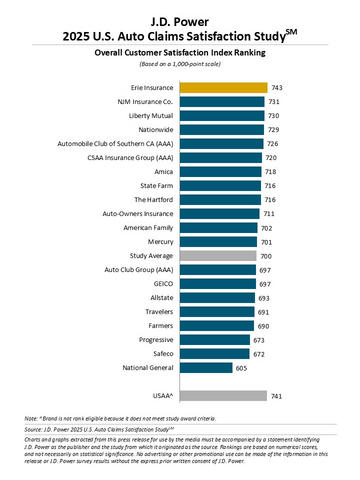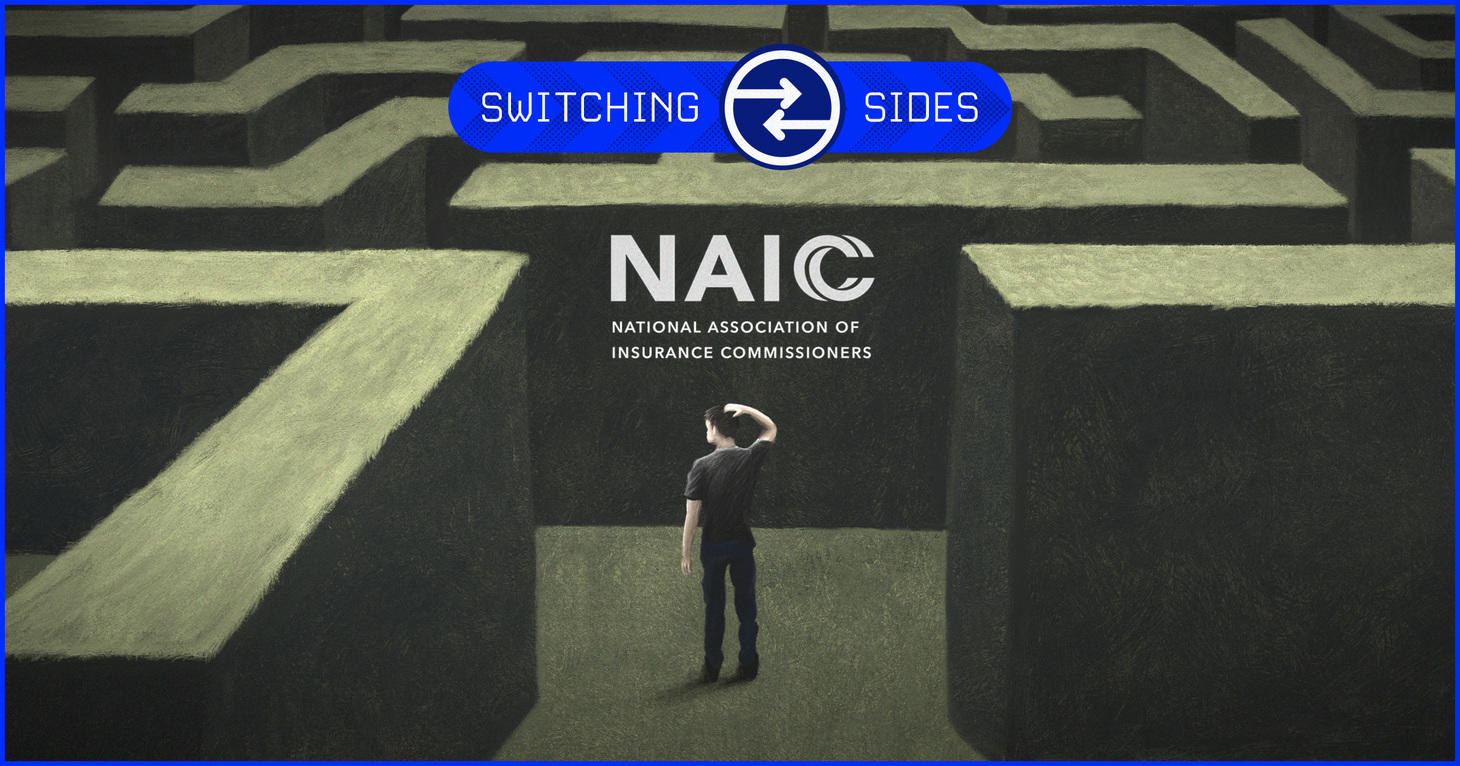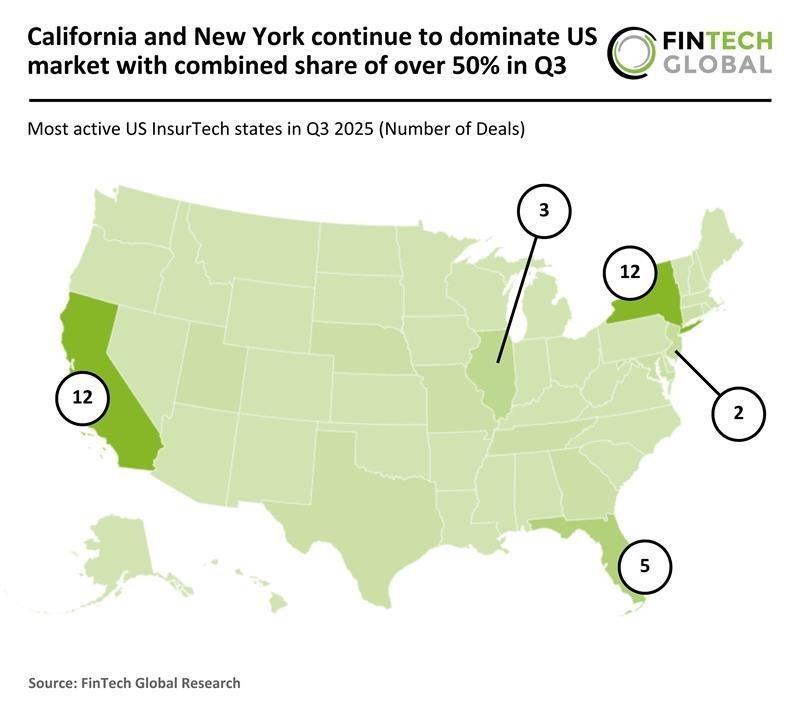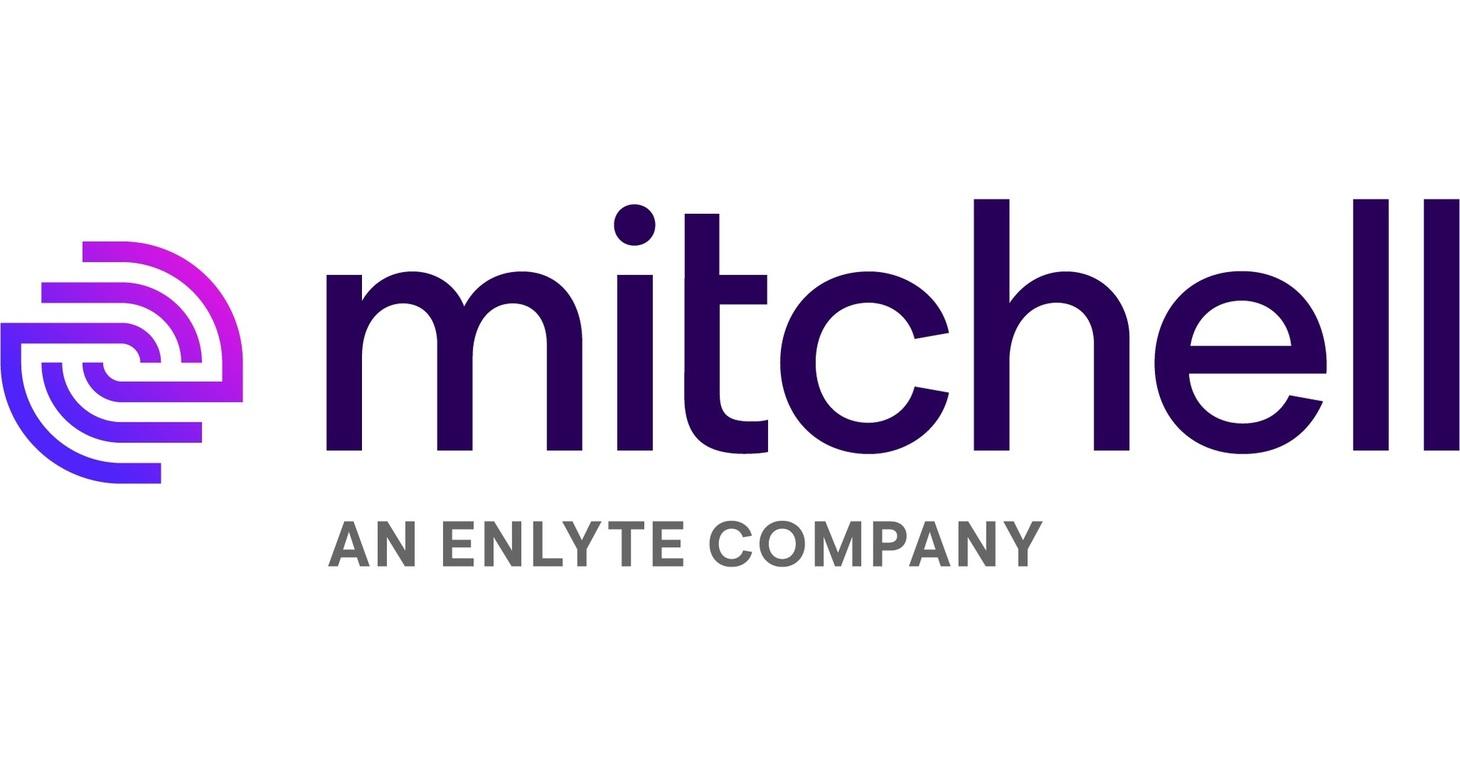News

Top 10 insurance executives made more than $134 million, while raising rates
A Consumer Federation of America (CFA) report found executives of the top 10 largest insurance companies received $134 million in total compensation in 2024, while their customers faced sizable premium hikes and increasingly widespread non-renewal notices.
Auto insurance costs were 7% higher in May 2025, compared to May 2024, while industry profits increased to $169 million in 2024, an Oct. 22 release about the report says.
“2024 was a bad year for policyholders, but another great year for insurance company shareholders and their CEOs,” said Michael DeLong, CFA’s Research and Advocacy Associate. “Insurance companies told regulators they had to charge consumers billions more in 2024 to stay afloat, but customers were just paying the price for insurer greed and executive excess.”
The report found Allstate had the largest auto insurance increase of the top 10 carriers at 12.2%. Compensation for its CEO/board chairman/president increased from $16.5 million to $26.1 million in 2024.
Liberty Mutual’s auto insurance increased by 9.9%, the second largest increase, while compensation for its chairman/CEO/president dropped from $10.3 million to $10.2 million.
Farmer’s Insurance had the third-highest increase of 9.8%, with its CEO’s compensation increasing from $3.4 million to $5.1 million.
State Farm saw the fourth-highest increase in auto insurance premiums at 8% with its CEO/president’s compensation increasing from $3.6 million to $4.4 million
Travelers Insurance had a premium increase of 7.4% with the chairman/CEO’s compensation increasing from $22.7 million to $23 million.
Data from the report comes from filings made with the Nebraska Department of Insurance, which is required to provide information about salaries, bonuses, and additional compensation of their CEOs and other top executives to sell policies in the state.
Research

Satisfaction with Auto Insurance Claims Strained by Higher Deductibles, More Total Losses, J.D. Power Finds
Erie Insurance Ranks Highest in Customer Satisfaction
Auto insurance rates have finally started to decline from the near-record highs of 2024, but customers are still feeling the sting of several years of sky-high insurance costs when it comes to their claims experience. According to the J.D. Power 2025 U.S. Auto Claims Satisfaction Study,SM released today, 26% of auto insurance customers now have deductibles of $1,000 or more, and 7% of auto insurance customers say they’ve avoided filing a claim for fear their rates could rise. As a result, overall satisfaction with the auto insurance claims process is largely flat at 700 (on a 1,000-point scale), rising just 3 points year over year.
"Auto insurance customers have made several adjustments to their policies in an effort to reduce costs—such as opting for higher deductibles, dropping rental coverage, avoiding filing claims and, in some cases, foregoing collision coverage altogether," said Mark Garrett, director of global insurance intelligence at J.D. Power. "These changes have generally had a negative effect on consumers as they are spending more money when they have a claim. However, fewer claims being reported translates to faster cycle times and better customer support, resulting in a 9-point improvement in satisfaction among repairable vehicles."

Enterprise Mobility: U.S. length of rental down to 15.5 days
Overall Length of Rental (LOR) for Q3 was 15.5 days, which is nearly a day lower than Q3 2024
A new report from Enterprise Mobility states that the change is similar to declines in Q1 and Q2 of this year.
“We have previously discussed the outsized impact on LOR in 2022 and 2023, given the post-COVID effects of vehicle production and supply chain issues,” the Enterprise Q3 LOR report states. “When we compare Q3 2025 to Q3 2021, overall LOR is currently 0.3 days higher; in Q3 2021, LOR was 15.2 days; in Q3 2020, LOR was 12.3 days.”
AI in Insurance

Switching Sides: Advocates say NAIC effort on AI 'devoid of any guidance'
The Model Bulletin on the Use of Artificial Intelligence Systems by Insurers is acceptable to insurer, but disappointed consumer groups.
Views on artificial intelligence in the insurance industry differ depending on who is doing the talking.
Insurance executives see the potential to cut risk, sharpen underwriting, and perform quicker customer service with fewer people – all of which adds up to a better report to investors. Consumer groups see the potential for hidden discrimination against classes that already suffer from rampant bias.
So, when it came time for the National Association of Insurance Commissioners to regulate the rapidly growing use of AI in insurance, both sides lobbied fiercely.
The resulting Model Bulletin on the Use of Artificial Intelligence Systems by Insurers is acceptable to the industry, but a bitter disappointment for consumer groups. Some critics use the AI experience as an example of how the industry regularly manipulates regulators to get the rules it wants.
Advocacy organizations, academics, and law firms have detailed how a “revolving door between the insurance industry and regulators creates a dangerous cycle that undermines consumer protections, threatens the objectivity and strength of regulatory oversight, and tilts policy toward corporate interests,” Public Citizen said.
Public Citizen members picketed the NAIC summer meeting in Minneapolis and attempted to get regulators to sign an anti-corruption pledge. The group collected zero signatures.
Commentary/Opinion
A new approach for the world’s climate strategy | Bill Gates
What I want everyone at COP30 to know.
What to know
- Climate change is serious, but we’ve made great progress. We need to keep backing the breakthroughs that will help the world reach zero emissions.
- But we can’t cut funding for health and development—programs that help people stay resilient in the face of climate change—to do it.
- It’s time to put human welfare at the center of our climate strategies, which includes reducing the Green Premium to zero and improving agriculture and health in poor countries. There’s a doomsday view of climate change that goes like this:
In a few decades, cataclysmic climate change will decimate civilization. The evidence is all around us—just look at all the heat waves and storms caused by rising global temperatures. Nothing matters more than limiting the rise in temperature.
Fortunately for all of us, this view is wrong. Although climate change will have serious consequences—particularly for people in the poorest countries—it will not lead to humanity’s demise. People will be able to live and thrive in most places on Earth for the foreseeable future. - -
Emissions projections have gone down, and with the right policies and investments, innovation will allow us to drive emissions down much further.

How to Build an Insurance Innovation Culture | Insurance Thought Leadership
Insurance companies must shift from innovation rhetoric to structural accountability, engaging all employees rather than isolated innovation teams.
Culture is often cited to explain why innovation does not work in insurance. We start by defining what culture is before delving into how a culture is born, why it matters and finally how to create a culture of innovation.
Dominique Roudaut is a senior executive vice president at Daiichi Life group
InsurTech/M&A/Finance💰/Collaboration
Guidewire Signs Definitive Agreement to Acquire ProNavigator
AI-powered knowledge management platform puts expertise at the fingertips of every insurance professional
Guidewire (NYSE: GWRE) today announced that it has entered into a definitive agreement to acquire ProNav Technologies Ltd. (d/b/a ProNavigator), a knowledge management platform purpose-built for the P&C insurance industry.
ProNavigator delivers precise, context-aware best practice information directly within insurance workflows, helping professionals work faster and more effectively. Its platform captures, connects, and surfaces institutional knowledge across claims, underwriting, and distribution. Used by 34 insurance organizations, including 12 shared customers with Guidewire, ProNavigator helps increase productivity, reduce claim cycle times, personalize customer service, and accelerate employee onboarding.
Once the acquisition is complete, Guidewire will integrate ProNavigator’s insurance-trained intelligence across its platform, delivering advanced search and contextual knowledge retrieval capabilities for underwriters, claims adjusters, brokers, agents, and customer service representatives.
“ProNavigator, inside of Guidewire, makes every insurance professional an expert,” said Mike Rosenbaum, Chief Executive Officer, Guidewire. “It helps people work smarter, providing faster responses, clearer communication, and personalized guidance to create a more modern experience for their customers. We’re excited to welcome Joseph D’Souza and the ProNavigator team to Guidewire.”
Wright Flood’s Buy of Poulton Associates to Create Largest Flood Insurance Provider
Wright National Flood Insurance Company said its affiliate, Wright National Flood Insurance Services, an operating company of Arrowhead Programs, has entered into an agreement to acquire the assets of Poulton Associates.
Poulton, one of the top providers of private flood insurance in the nation, will make Brown & Brown Inc. subsidiary Wright Flood the largest provider of flood insurance in the United States, the company said. Wright Flood offers federal, excess, and private flood insurance.

US InsurTech deal activity increased by 39% QoQ in Q3
California and New York continue to dominate US market with combined share of over 50% in Q3
Key US InsurTech investment stats in Q3 2025:
- US InsurTech deal activity increased by 39% QoQ in Q3
- California and New York continue to dominate the US InsurTech landscape as companies based in those two states secured over 50% of all deals in the country during Q3
- Reserv, a New York-based InsurTech specialising in AI-driven claims management solutions, secured one of the biggest InsurTech deals in the third quarter with an additional $16m fresh funding
US InsurTech deal activity increased by 39% QoQ in Q3
In Q3 2025, the US InsurTech market bounced back in both funding and deal activity following a subdued first half of the year.
The sector secured $559.5m across 32 deals, marking an 18% increase in funding and a 39% rise in deal activity compared to the $474.9m raised through 23 deals in Q2 2025.
However, when compared with Q3 2024, total funding fell sharply by 71% from $1.9bn, even as deal volume increased by 33% from 24 deals, suggesting smaller deal sizes and cautious investor sentiment.
It is important to note that Q3 2024 included Sedgwick’s $1bn deal, which heavily inflated overall funding for that quarter.
Excluding this transaction, underlying funding in Q3 2024 would have been $908m, meaning that funding in Q3 2025 actually declined by 38%, reflecting a continued moderation in investor appetite despite the uptick in activity levels.
FinTech Global
Telematics, Driving & Insurance

How OEMs Are Rewriting the Rules of Auto Insurance
From Tesla to Volvo, embedded OEM insurance is gaining traction, promising more seamless customer experiences and smarter, fairer pricing models.
OEMs aren’t just building vehicles and parts anymore. They’re creating entire transportation ecosystems, including integrated insurance.
Volvo has launched its own independent insurance agency in the U.S., offering customers the ability to purchase policies from multiple underwriters directly through its app. The Swedish carmaker’s entrance into the insurance industry follows in the footsteps of Tesla and Honda.
While still in early stages, these OEM-led insurance offerings are reimagining auto insurance by embedding it directly into the ownership experience. They have promised to align policies more closely with how people actually drive and interact with their vehicles.
But success hinges on more than data access. To win customer trust and market share, OEMs must also lead with transparency and clearly articulate the value exchange that comes with connected insurance.
Four ways OEMs are reshaping the insurance market
OEM-led insurance programs may still be in their infancy, but they carry significant potential to influence how insurance is priced, packaged, and delivered.
Here are four major ways OEM-led insurance is reshaping the industry
Henry Kowal is the Director of Product Management at Arity
Financial Results

The Hartford - The Hartford Announces Record Third Quarter Earnings
- Record third quarter 2025 net income available to common stockholders of $1.1 billion ($3.77 per diluted share) increased 41% from $761 million ($2.56 per diluted share) over the same period in 2024. Record core earnings of $1.1 billion ($3.78 core earnings per diluted share) increased 43% from $752 million ($2.53 core earnings per diluted share) over the same period in 2024.
- Net income ROE for the trailing 12 months of 20.3% and core earnings ROE* of 18.4%.
- Property & Casualty (P&C) written premiums increased by 7% in the third quarter of 2025, driven by Business Insurance premium growth of 9%.
- Business Insurance third quarter 2025 combined ratio of 88.8 and an underlying combined ratio* of 89.4.
- Personal Insurance third quarter 2025 combined ratio of 88.7 and an underlying combined ratio* of 90.0.
- P&C current accident year (CAY) catastrophe (CAT) losses in third quarter 2025 of $70 million, before tax, compared with $247 million, before tax in third quarter 2024.
“The Hartford delivered outstanding third quarter results, generating record core earnings of $1.1 billion and a trailing 12-month core earnings ROE of 18.4 percent,” said The Hartford’s Chairman and CEO Christopher Swift. “These results highlight the strength of The Hartford’s franchise, effectiveness of our strategy and ability to deliver differentiated solutions for customers.”
The Hartford's Chief Financial Officer Beth Costello said, “Business Insurance delivered excellent top-line growth of 9 percent, with an underlying combined ratio of 89.4. Excluding workers’ compensation, pricing was 7.3 percent, and above the overall loss trend. Personal Insurance achieved 3.7 points of underlying combined ratio improvement, while Employee Benefits delivered an outstanding core earnings margin of 8.3 percent. Investment performance was strong, supported by a diversified portfolio and attractive new money yields."
Swift continued, “Building on our consistent track record of annual dividend increases, we are pleased to announce a 15 percent increase in the common quarterly dividend. As we enter the final quarter of 2025, our financial strength, disciplined execution, and investments to advance innovation continue to position The Hartford to deliver strong results. In a dynamic market, these advantages reinforce our competitive standing and ability to generate superior returns for shareholders."
Announcements

New Mitchell Solution Automatically Populates Collision Estimates with Recommended ADAS Operations
Mitchell, a leader in the development of innovative auto physical damage technology solutions, today announced the upcoming availability of Mitchell Diagnostics Sync.
The company's newest offering allows recommended ADAS operations from third-party providers to be added automatically to Mitchell Cloud Estimating—helping to improve repair efficiency and ensure that diagnostic procedures are more accurately performed, documented and billed.
"Diagnostic scanning and ADAS calibrations have become a key component of collision repair," said David Caulfield, CEO of Fix Auto Anaheim North. "To meet the needs of our insurance partners and the vehicles we service, we rely on multiple diagnostic solutions. Having the ability to pre-populate Mitchell estimate lines with data from these applications will allow us to work more efficiently while remaining focused on delivering proper and safe repairs."
Mitchell Diagnostics Sync eliminates the previously manual export of estimating data and import of third-party scan and calibration reports. These reports are now attached to the correct job in Mitchell Connect and the recommended ADAS operations are added automatically to Mitchell Cloud Estimating based on the specific vehicle and collision-damage information entered. This is designed to simplify documentation, eliminate data re-keying and provide estimators with critical repair information as the appraisal is written. The integrated third-party reports can then be easily shared with insurers and vehicle owners.
Mitchell was the first to develop a diagnostic system specifically for the collision repair and automotive claims markets," said Jack Rozint, senior vice president of repair sales at Mitchell. "Now through our open platform, diagnostic scan and calibration tools, Predictive ADAS functionality and the introduction of Mitchell Diagnostics Sync, we have a complete solution for all pre- and post-repair diagnostic workflows."
